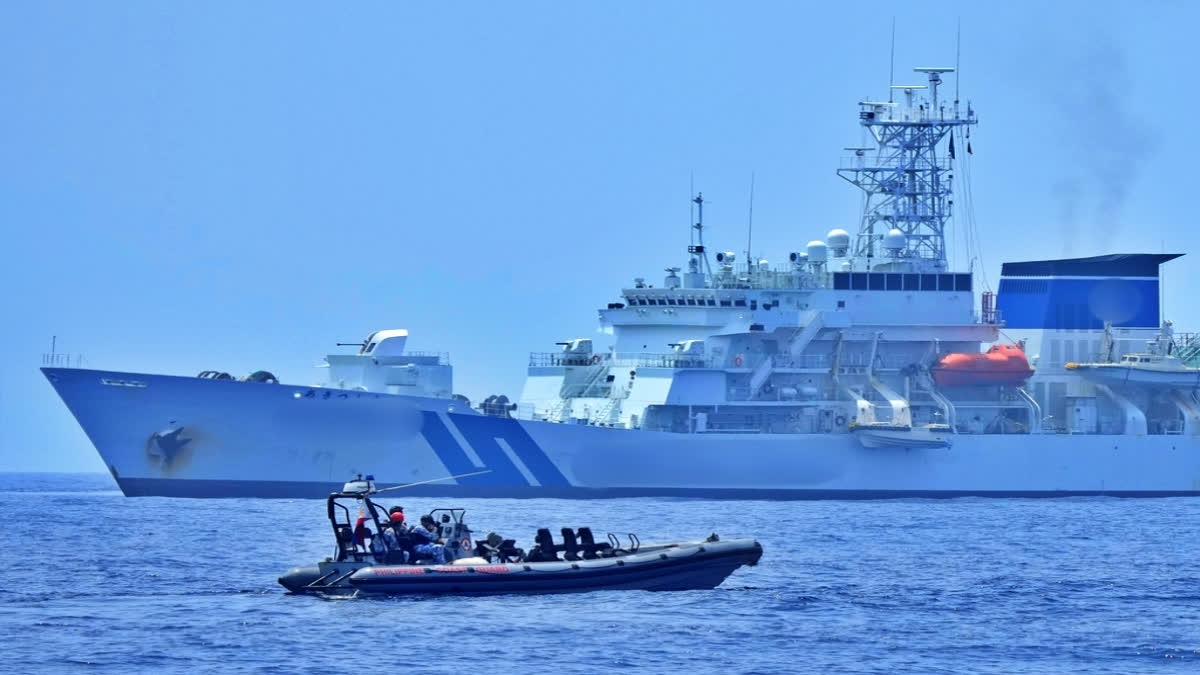New Delhi: In what would yet again raise hackles in New Delhi, Chinese authorities have sought permission from Sri Lanka to allow a “research” vessel to carry out marine research activities in the island nation’s waters.
With the Chinese research vessel Shi Yan 6 scheduled to arrive in Sri Lanka in October, the Sri Lankan Foreign Ministry has been put in a quandary as regards granting approval, according to a report in the Daily Mirror. The report, citing sources, said that the research/survey vessel sailing under the flag of China has a carrying capacity of 1,115 DWT. It is 90.6 meters long and 17 meters wide.
This comes after a Chinese vessel claiming to be a research vessel docked in Colombo earlier this ostensibly for replenishments. The Hao Yang 24 Hao actually turned out to be a Chinese warship. The 129-metre-long ship is manned by a crew of 138 and is commanded by Commander Jin Xin.
Last year too, India had strongly protested when a Chinese survey vessel called the Yuan Wang 5 was allowed to dock at the Hambantota port in Sri Lanka. Though the ship was described as a research and survey vessel, security analysts said that it was also packed with space and satellite tracking electronics that can monitor rocket and missile launches. The ship was given permission to dock by then-President Gotabaya Rajapaksa a day before he fled the country in the midst of an economic crisis.
“It seems China is getting increasingly active in the Indian Ocean region,” Anand Kumar, Associate Fellow in the Manohar Parrikar Institute of Defence Studies and Analyses, told ETV Bharat. “We are likely to see this more of this in the future.”
During his visit to India last month, Sri Lankan President Ranil Wickremesinghe had tried to assuage New Delhi’s apprehensions about the presence of Chinese naval ships in his island nation’s waters. Wickremesinghe said that his country has adopted a new standard operating procedure (SOP) to determine what kind of military and non-military ships and aircraft will be allowed to visit the country. The SOP was adopted following a request by India but its details are not available in the public domain yet. The US too has been pressurising Sri Lanka not to allow Chinese naval ships in its waters due to security and strategic considerations.
Though Wickremesinghe claims that his country maintains an Asia-centric neutral foreign policy without getting involved in any major power rivalry, Colombo is compelled to maintain equally good relations with both New Delhi and Beijing due to external debt obligations and the economic crisis last year.
But the fact of the matter is that, explained Kumar, Sri Lanka cannot afford to refuse China’s request for permission to allow its ship’s access to its waters because of Beijing’s huge investments in India’s southern neighbour.
India is part of a Quad that also comprises the US, Japan and Australia which is working for a free and open Indo-Pacific in the face of China’s hegemony in the region. That is why security in the Indian Ocean region has huge strategic implications. Not only for India, what Colombo does in terms of foreign policy and developments in Sri Lanka have wider implications for other major powers’ access to the Indian Ocean.
Following the docking of the Chinese warship at Colombo earlier this month, External Affairs Ministry spokesperson Arindam Bagchi had said that the Indian government “carefully monitors any development having a bearing on India's security interests and takes all necessary measures to defend them”.
So what can India, or for that matter the Quad, do to deter Sri Lanka from allowing the Chinese vessel from entering its waters? “India can, at best, express its displeasure,” Kumar told ETV Bharat.
In other words, Sri Lanka, having leased out the Hambantota port to China for 99 years after falling into a debt trap from Beijing, has no option but to keep giving access to India’s northern neighbour in the Indian Ocean.
Also read: Chinese warship’s port of call in Sri Lanka: Why Colombo can’t say no to Beijing



